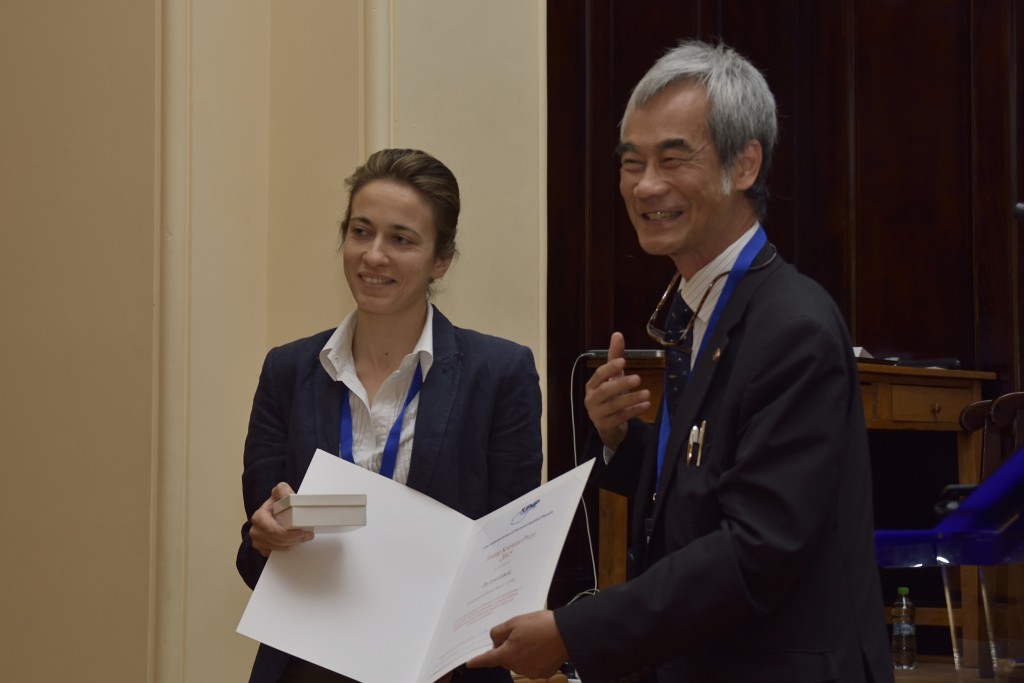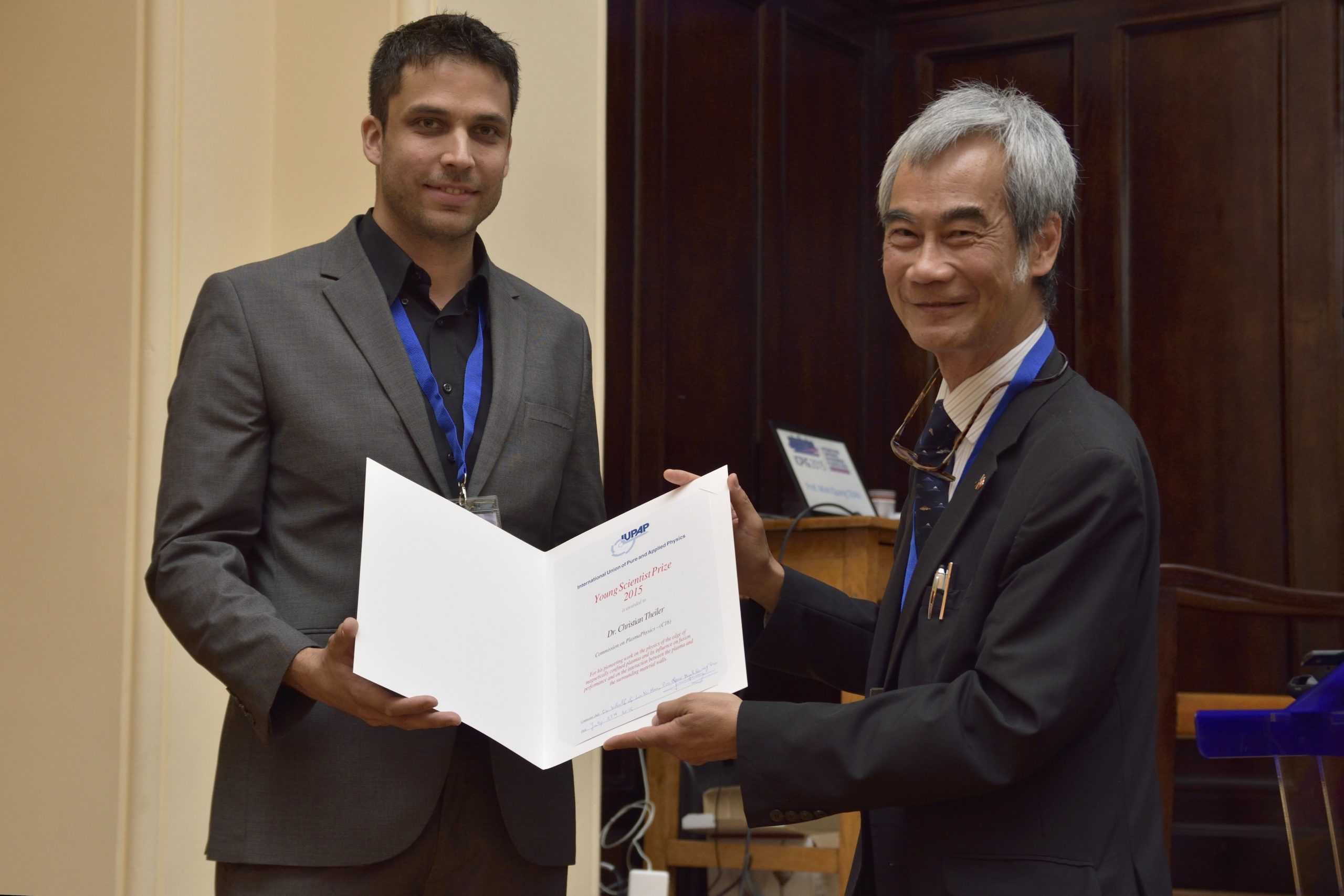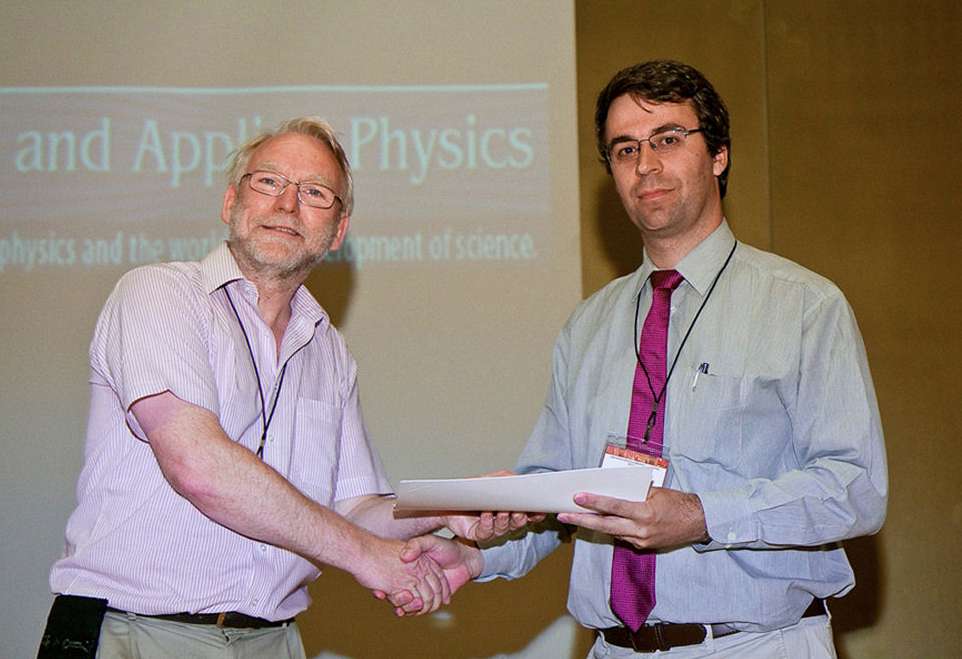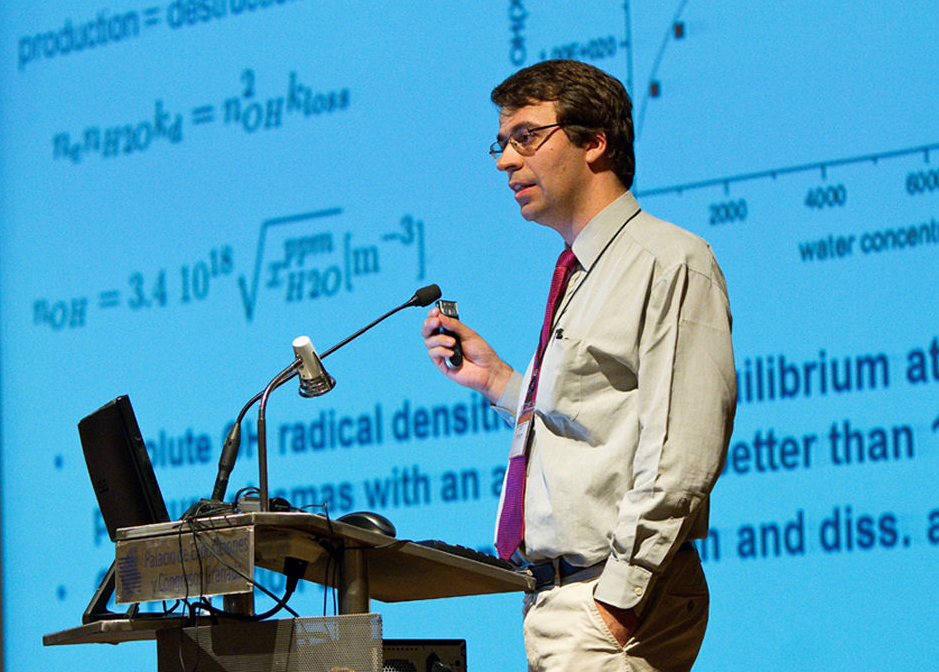
Dr. Xing-Long Zhu
“For his outstanding contributions to the exploration of new physics in the interactions of intense lasers and energetic electron beams with plasma and their applications in the generation of advanced radiation sources and high-energy secondary particles”
Dr. Xing-Long Zhu has been a research professor at the Institute for Fusion Theory and Simulation of Zhejiang University in China since 2024. He received his PhD in physics from Shanghai Jiao Tong University in 2021 under the supervision of Prof. Zheng-Ming Sheng. The topic of his PhD thesis is on advanced radiation sources from laser plasma acceleration. For his PhD thesis work, he was awarded the prestigious John Dawson Thesis Prize (best PhD thesis in the field of plasma-based accelerators), the Outstanding Dissertation Award from the International Organization of Chinese Physicists and Astronomers, and Cai Shidong Award for the excellent PhD thesis in Plasma Physics in China. After PhD, he joined the Tsung-Dao Lee Institute as a postdoctoral researcher, where he continued his studies in the field of laser-plasma interactions and high-field physics, mainly through theoretical analysis and numerical modeling. His research interests include laser plasma accelerators, plasma optics, strong-field quantum electrodynamics (QED) physics, and advanced radiation sources, particularly focusing on the nonlinear interplay between strong-field QED processes and collective plasma physics effects.

Dr Vinícius Njaim Duarte
“For elucidating the mechanism behind the nature of the nonlinear response of Alfvénic waves in fusion experiments, and for the advancement of collisional plasma kinetic theory that led to a self-consistent transport theory, established from first principles and successfully applied to the dynamics of fusion plasmas and self-gravitating systems.”
Vinícius Njaim Duarte is a Research Physicist in the Princeton Plasma Physics Laboratory at the Princeton University (USA) since 2018. He completed his undergraduate studies at the State University of Campinas (Brazil), with a MsC in Physics on helical traveling wave current drive in plasmas. He obtained his PhD at the University of Sao Paulo (Brazil) in 2017 on quasilinear and nonlinear dynamics of energetic-ion-driven Alvénic eigenmodes, for which he received the José Leite Lopes Thesis Award conferred by the Brazilian Physical Society.
His theoretical research is focused on wave-particle resonances in plasma physics, with critical impact in closing gaps on both plasma theory as well as in tokamak physics operations. Among his contributions, he demonstrated the origin of ubiquitous wave chirping in fusion experiments, elucidating the mechanism that causes Alfvén waves to behave differently in conventional tokamaks and in spherical tokamaks, and he contributed significantly to the development of the resonance-broadened quasilinear model, a first-principles reduced model for the impact of Alfvén eigenmodes on fast ions in magnetically confined plasmas. Vinícius was recently prestigious Early Career Research Program Award sponsored by the US DOE’s Office of Science.

Dr Jannis Teunissen
“For development of a suite of numerical codes to simulate streamer discharges in full 3D with their intricate inner structure, including their interactions and branching statistics, in agreement with experiments, as well as for contributions to codes and predictions for relativistic MHD in astrophysics, and to machine learning for space weather.”
After a MSc degree in Computational Science from University of Amsterdam (NL), Jannis Teunissen defended cum laude his PhD in November 2015 at Eindhoven University of Technology (NL); the thesis presents the first realistic models for 3D streamer channel evolutions, combining adaptive mesh refinement with a Poisson solver based on multigrid techniques. He received then a very competitive personal career grant for 3 postdoc years from the Flemish research foundation and moved to KU Leuven (BE) to advance numerical methods for astrophysical and solar plasmas, modernizing and further developing the MPI-AMRVAC software package, allowing it to handle radiative-hydrodynamics simulations in optically thick environments. In 2018, he got a tenure track position at the Centrum Wiskunde & Informatica (CWI, NL), after which he has also worked on the application of machine learning to space weather predictions.

Dr Marija Vranic
“For outstanding contributions on the understanding of the interplay between classical and quantum effects in extreme ultra-intense laser-plasma interactions, on the underlying computational methods, and on the applications for plasma-based secondary sources of energetic particles”
Marija Vranic obtained her MSc degree from University of Belgrade, Serbia and her PhD at Instituto Superior Tecnico in Lisbon, Portugal. After PhD, she was working in Extreme Light Infrustructure in Prague, Czech Republic, and then returned to Portugal. Her research is focused on plasmas in extreme conditions, where quantum effects can affect the collective plasma dynamics. She combines analytical theory and massively parallel computer simulations to perform the studies relevant for state-of-the-art and near-future laser experiments using the most intense lasers in the world. Marija is a winner of the international John Dawson PhD thesis prize (best PhD thesis in the field of plasma-based accelerators), the IBM Scientific Prize and Ada Lovelace PRACE award.

Dr Tatsuya Kobayashi
“For outstanding contributions on the driving mechanism of the mean radial electric field and zonal flow and the impact of the radial electric field on the turbulent transport and structure formation in magnetically confined fusion plasmas”
Tatsuya Kobayashi has been an assistant professor at the National Institute for Fusion Science (NIFS) since 2014. He graduated from the National Institute of Technology, Matsue College in 2009 after an electrical engineering course. He obtained his PhD in Physics in March 2014 at Kyushu University, where he studied basic turbulence physics in magnetized plasmas. After moving to NIFS, he continued his studies in turbulence structure formation, mainly through experimental data analysis and modeling, particularly focusing upon the nonlinear interplay between turbulence and the radial electric field. In parallel, he conducted experiments in the Large Helical Device (LHD) in order to clarify the underlying physics of the hydrogen isotope effect in transport barrier criticality.

Dr Joaquim Loizu
“In recognition of his seminal work in the fundamental understanding of three-dimensional magneto-hydrodynamic equilibria and of the interaction of a plasma with a solid wall”
Dr. Joaquim Loizu is a researcher and lecturer at the Swiss Plasma Center (SPC) of the École Polytechnique Fédérale de Lausanne (EPFL). He graduated in Physics from EPFL in 2009, carrying out his master thesis project at the Center for Bio-Inspired Technology, Imperial College London, on the theoretical and numerical study of the biophysics of light-sensitive neurons. He then joined the SPC for his doctoral studies on “The role of the sheath in magnetized plasma turbulence and flows” and obtained his PhD in 2013. After that, he spent one year at the Princeton Plasma Physics Laboratory and one year at the Max-Planck-Institute for Plasma Physics (IPP) in Greifswald. During this time, he worked on 3D MHD, studying the formation of singular currents and magnetic islands at rational surfaces. In 2016, he obtained an EUROfusion Postdoctoral Fellowship to carry out research at IPP-Greifswald, focusing on the computation of 3D MHD equilibria in stellarators. In 2018, he joined the SPC as a Scientist. He is also one of the leaders of the Simons Collaboration on Hidden Symmetries and Fusion Energy. His current research interests include MHD equilibrium and stability, magnetic reconnection, self-organization, non-neutral plasmas, plasma sheaths, and plasma transport in chaotic magnetic fields.

Joaquim Loizu (left), recipient of the 2020 IUPAP Young Scientist Prize in Plasma Physics receiving the award from Minh Quang Tran [Chair, IUPAP Commission C16]
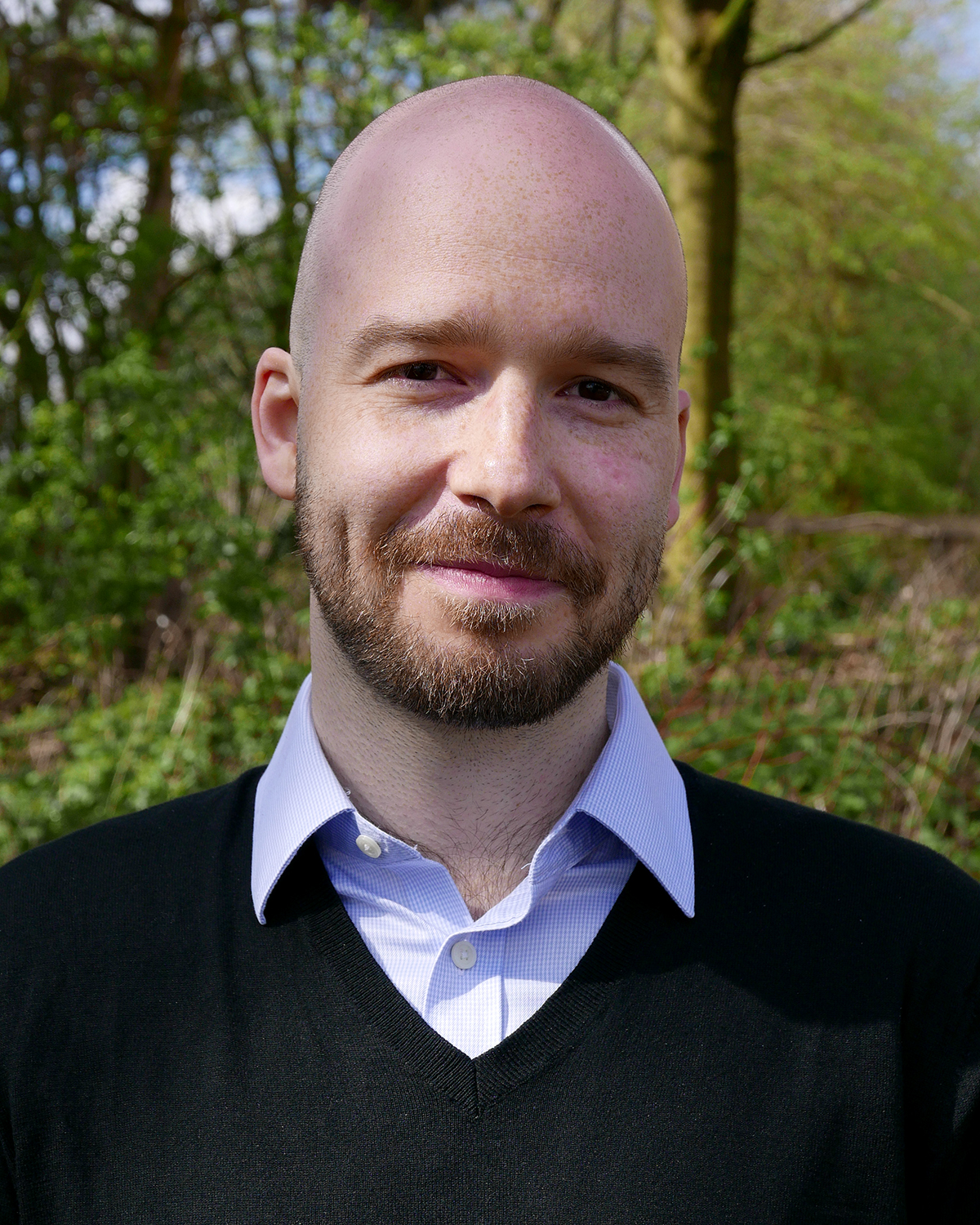
Istvan Cziegler
“For his major contributions to the understanding of coupling between plasma flows and turbulence, especially with regard to their role in transitions between tokamak confinement states which are central to the achievement of fusion energy”
Istvan Cziegler is a lecturer in the York Plasma Institute of the Department of Physics at the University of York. He completed his undergraduate studies at the Eötvös Loránd University (Hungary) in atomic and molecular physics earning an MSc with honors for studies on edge plasma modes and hydrodynamic chaos. He received his PhD in physics from the Massachusetts Institute of Technology (MA, USA) for a thesis in the area of turbulence and transport phenomena in fusion plasmas. During his graduate studies he built an ultra-fast imaging system and developed analysis techniques for turbulence nonlinearity which allowed him to resolve the fine time structure of turbulence phase transitions. His main research interests include self-organization, transport, and spectral transfer phenomena in plasma turbulence, core and edge coupling in fusion grade plasmas of tokamak and spherical torus devices, alternative regimes of high confinement operation, and the development and exploitation of optical plasma diagnostics.

Eleonora Viezzer
“For outstanding contributions on the interplay between radial electric fields, plasma flows and transport in magnetically confined fusion plasmas combining cutting-edge diagnostic techniques and state-of-the-art theoretical models”
Eleonora Viezzer is awarded the 2018 IUPAP Young Scientist Prize in Plasma Physics for her exceptional contribution in the field of confined fusion plasma physics combining theoretical models and experiment.
Eleonora Viezzer studied physics and mathematics at the Leopold-Franzens University of Innsbruck and at the Ludwig-Maximilian University of Munich. She did her PhD thesis “Radial electric field studies in the plasma edge of ASDEX Upgrade” at the Max Planck Institute for Plasma Physics in Garching, Germany and received her doctorate from the Ludwig-Maximilian University of Munich in 2013. During her PhD thesis she built a high-resolution edge charge exchange recombination spectroscopy diagnostic suite which allowed her to unravel the nature of the radial electric field and the existence of poloidal impurity asymmetries. Following her thesis work, she did a Postdoc at the Max Planck Institute for Plasma Physics with a EUROfusion Researcher fellowship. In 2016, she started her academic career with a tenure track position and a Marie Sklodowska Curie grant at the University of Seville where she is currently leading a research group on tokamak plasma edge physics.
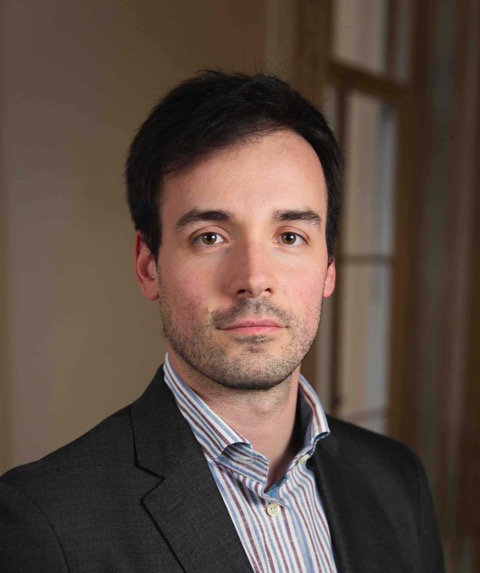
Sam M.Vinko
“In recognition of his seminal contributions in using the world’s first hard x-ray free electron laser to create and diagnose solid density plasmas, and for new insights into the electronic structure and collisional dynamics of such systems”
Sam Vinko received his Master’s degree from the University of Rome Tor Vergata (Italy) in 2007, and his doctorate from the University of Oxford (UK) in 2011 working with Prof. Justin Wark, investigating the interaction of intense XUV light with solid-density matter on the FLASH free-electron laser (FEL) in Hamburg (Germany). He was awarded the Culham thesis prize from the UK Institute of Physics for this work in 2012. As a postdoctoral researcher at the University of Oxford he worked extensively on the Linac Coherent Light Source FEL in Stanford (USA), showing how intense X-rays could be used to create and study plasmas at temperatures and densities similar to those found half-way towards the centre of the Sun, with exquisite precision and control. Dr. Vinko was awarded a Royal Society University Research Fellowship in 2014 and now leads a research group at the University of Oxford focused on investigating matter in extreme conditions using X-ray FEL sources. He shared the 2015 Dawson Award for Excellence in Plasma Physics Research, awarded by the American Physical Society for outstanding achievement in plasma physics.
The 2015 Young Scientist Award for the Commission on Plasma Physics (C16) were awarded to Dr Livia Lancia and Dr Christian Theiler. The awards were presented at the recent ICPIG conference held in Iasi, Romania from July 26-31, 2015. The Vice Chair of C16, Dr. M. Q. Tran, presented the awards on behalf of the Commission.
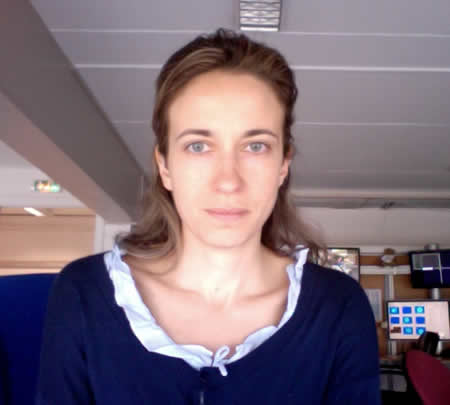
Dr. Livia Lancia
“For experimental contributions to our understanding of laser-matter interaction phenomena, including Brillouin amplification of laser beams and magnetic fields self-generation in plasmas”
After her Bachelor degree, Dr. L. Lancia got her Master in « Scienze per l’Ingeneria » from University of Rome, La Sapienza in 2006. Both for her Bachelor and Master degrees, she got the highest final mark 110/110. She then performed her PhD work in the field of laser plasma interaction, which was awarded on 2010 as a joint PhD between the University of Rome, La Sapienza and the Ecole Polytehnique, Palaiseau (France). The thesis title was « Study of non-linear effects on laser propagation and electron transport in plasmas”. After a post-doctoral period at the University of Rome, La Sapienza, she is now a Researcher – Teacher at the same University. She also conducts research as Principal Investigator at the Laboratoire d’Utilisation des Lasers Intenses, LULI (Fr). In parallel with her research activities, she teaches Physics at the University of Rome.
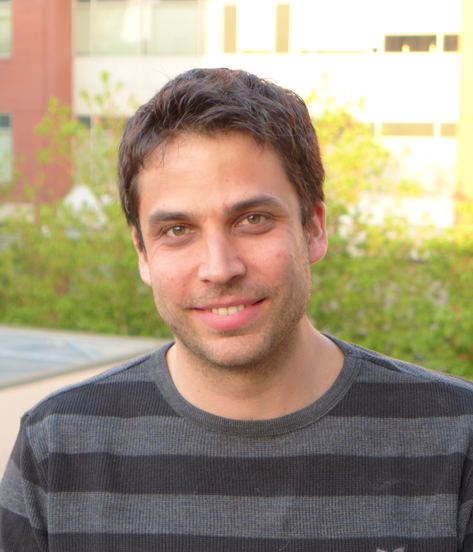
Dr. Christian Theiler
“For pioneering work on the physics of the edge of magnetically confined plasmas and its influence on fusion performance and on the interaction between the plasma and the surrounding material walls”
Dr. Christian Theiler got his master degree in physics from the Eidgenössische Technische Hochschule Zürich ETHZ in Zurich (CH). He then joined the Centre de Recherches en Physique des Plasmas (CRPP) of the Ecole Polytechnique Fédérale de Lausanne (EPFL in Lauasanne, CH) for his PhD thesis, which he got in 2011. His thesis, “Basic Investigation of Turbulent Structures and Blobs of Relevance for Magnetic Fusion Plasmas”, got a Special Distinction among the Best Thesis of the EPFL. He then moved to the Plasma Science and Fusion Center of the Massachusetts Institute of Technology for his postdoctoral years (2012-2014). During this period, he was also granted a Swiss National Science fellowship as an advanced postdoctoral fellow. In 2014, he won one of the EUROfusion post-doctoral fellowships and came back to the CRPP. Besides his research activities on the CRPP tokamak TCV, he also participated in the preparation of the first massive open online course MOOC on plasma physics.




